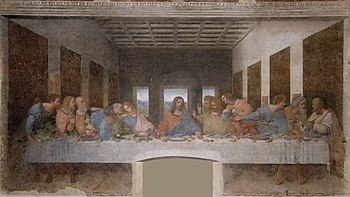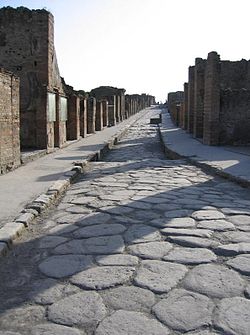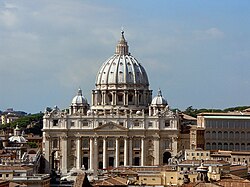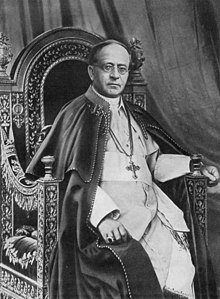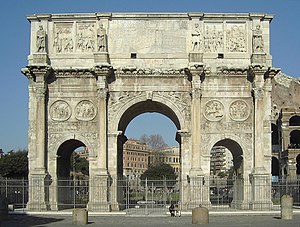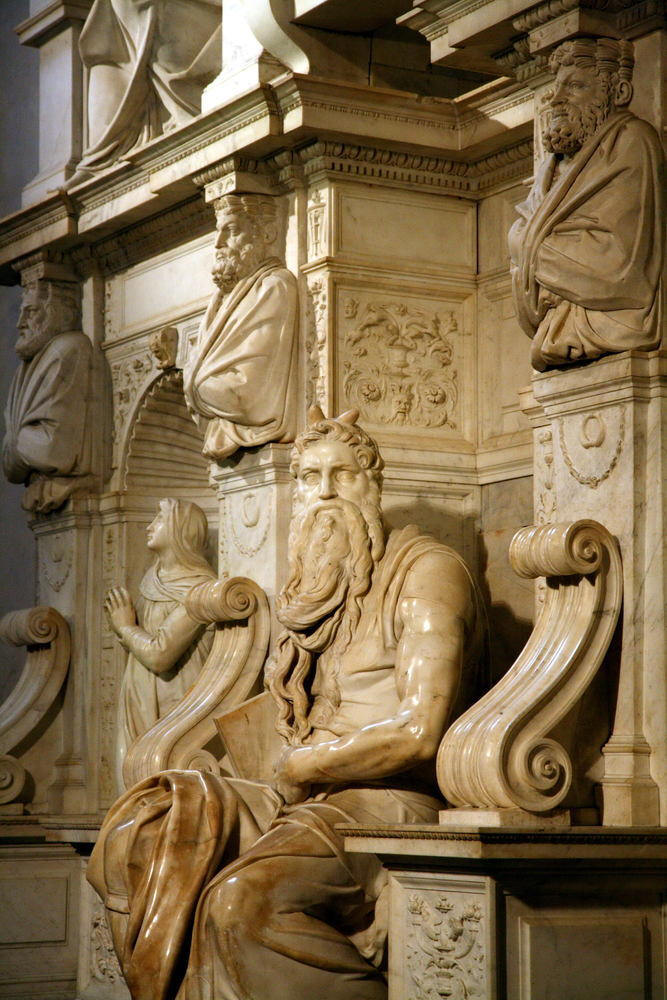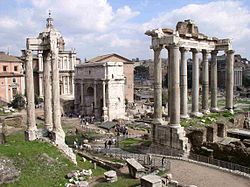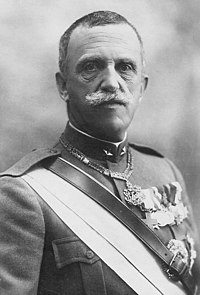View Larger Map
Arrived in Rome evening of March 25.
Billions of dollars have been poured out here in the capital city of Catholicism on beautiful buildings, fountains, columns and art work. Much of it is owned directly by the church whose head resides in the tiny area of the
Vatican (A). The
basilica San Pietro (B) with dome designed by Michelangelo is so impressive on outside but so barnlike on the inside that it leaves much to be desired. Huge round arched passages with beautiful side chapels and sculpture work. The Swiss guards with striped uniforms and halberds (spears) are prominent.
Basilica San Pietro
I wrangled an audience with the Pope by going to the American College (for clergy) and telling them that I was interested (I didn’t say how) in their church, and showing them my passport.
It took about an hour and a half to go into the inner palace and past many groups of soldiers in elaborate uniforms (more elaborate than any I have seen) to the hall where the Pope finally appeared. We were all around a huge ellipse down on one knee. All women dressed in black, with veil over heads. The Pope passed down the line extending his hand so the person could kiss his ring. He was a rotund, sallow, bespectacled man. I pressed his hand to my chin.
Pope Pius XI, the Pope in 1932
I also went to the
Scala Santa (C) (holy stairs) in the Lateran complex. This is the co-cathedral of Rome. There are 28 marble steps worn badly and covered with wood. These supposedly were brought from the house of Pontius Pilate in Jerusalem by St. Helena in 326. According to a notice the Pope grants a perpetual indulgence to souls in purgatory for one person crawling up the staircase on knees and saying a prayer on each and then in the chapel at the top. It was up these steps that Martin Luther is recorded as having decided to renounce Rome. He was then a Catholic monk.
Scala Santa
Cloisters, The Lateran
(San Giovanni Laterno)
Rome
April, 1932
Also saw
Colosseum (D), which has been considerably rebuilt as indicated by old paintings in art galleries which I saw, a little of the catacombs, the
Church of San Pietro in Vincoli (H) with its striking statue by Michelangelo of the horned Moses, and the Capuchin Monastery where bones of dead monks are seen in basement clothed in their habits. They were dug out when the site of the monastery was moved.
Colosseum
Begun by Vespasian
Inaugurated by Titus, A. D. 80
With spectacles lasting 100 days during which more than 5,000 wile beasts were slain.
Elliptical three rows would seat 50,000 people.
March 1932
The Coliseum
Arch of Constantine & Colosseum (E)
Rome
March 1932
The horned Moses in the Church of San Pietro in Vincoli
Roman Forum
Arch of Septimus Severus (F)
203 A.D.
Basilica Julia
February [probably meant March/April] 1932
Roman Forum
Arch of Titus in distance. Temple of Antonius, Pius, and Faustina (G)
February [probably meant March/April] 1932
I did see King Victor Emmanuel who was getting old, but never saw Mussolini, who was then in power. Trains were running more or less on time, but there were lots of poor people.
King Victor Emmanuel
I went to San Pietro’s on Easter Sunday, amidst several hundred thousands of people. You had to stand up inside the basilica. The big pipe organ sounded like a little tinny toy. I detected no spirituality.

Castel Sant' Angelo (I)
(Tomb of Hadrian)
Incorporated in City Walls. Besieged many times. Now a museum, largely of weapons.
Rome
April 1932



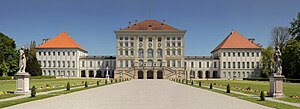



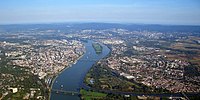


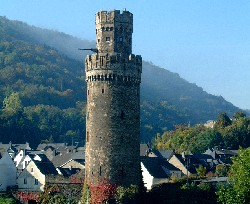


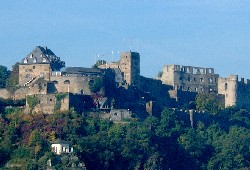

.jpg/250px-Leaning_Tower_of_Pisa_(April_2012).jpg)
